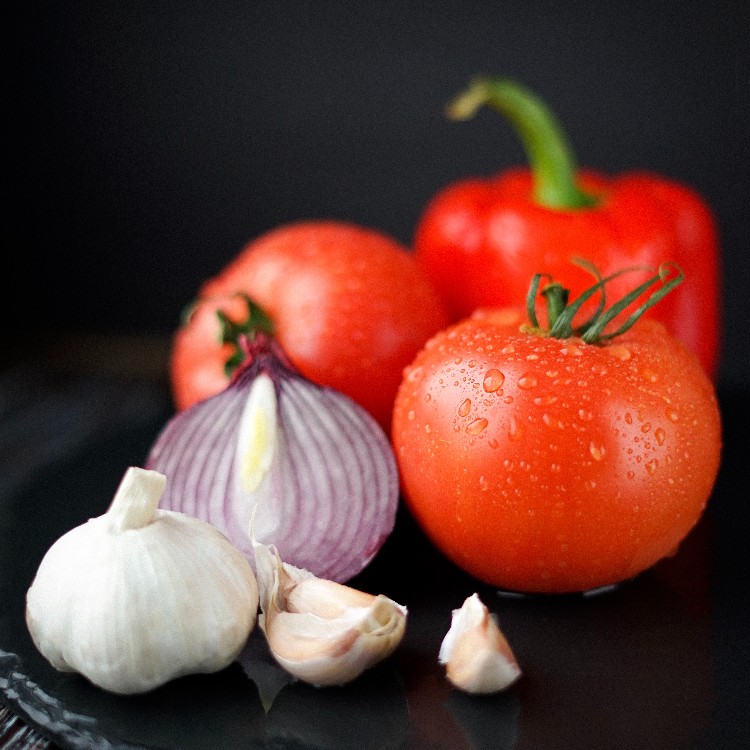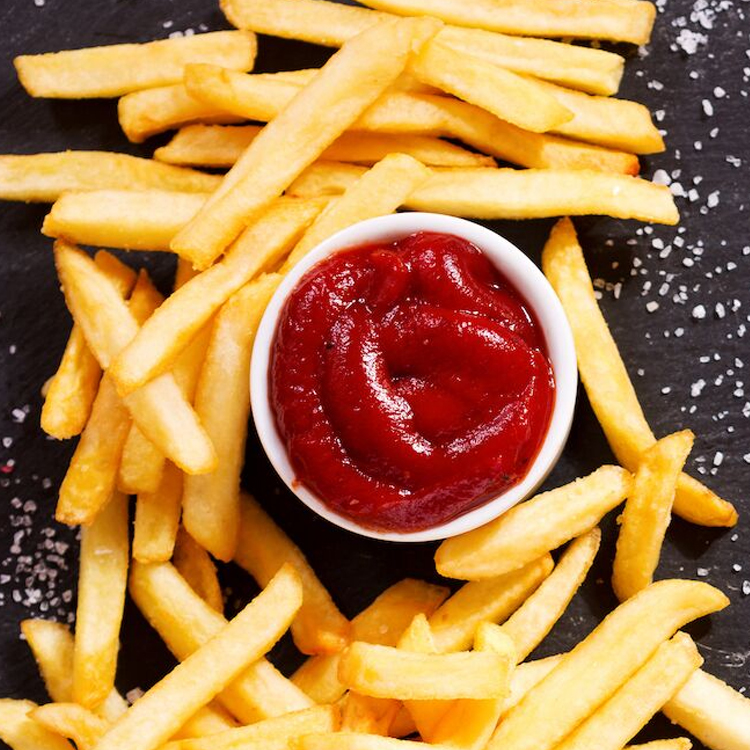
Quercetin Foods: Nature’s Treasure Trove of Health and Flavor
Although we talked about quercetin and its health benefits in detail, today we are dealing with natural sources of this incredible antioxidant. Whether we take it from supplements or not, diet is always considered the best way to get the nutrients we need. In addition to the potent antioxidants, healthy and unprocessed foods often contain fibers that improve digestion and other nutrients that work in synergy.
Let’s look at quercetin foods a little closer.
Quercetin Foods List
We created a list of powerful foods high in quercetin. All foods are ranked according to the concentration of this antioxidant, starting with the well-known source, capers.
Capers
Capers may be small in size, but when it comes to their quercetin content, they are really promising. These little green buds are a powerful source of this valuable compound. Capers typically contain an impressive 2500–3500 mg of quercetin per kilogram!
The health benefits of capers go beyond quercetin since they contain plenty of essential nutrients, including fiber, vitamin K, iron, calcium, and magnesium. Capers not only add flavor to your meals but also make them healthier by supplying antioxidants and other nutrients. Sprinkle them on salads, add them to sauces, or eat them raw, and you won’t be mistaken.
Onion
Quercetin content in onions can vary depending on factors such as the type of onion, growing conditions, and storage. On average, red and yellow onions have higher quercetin levels compared to white onions. They are also rich in various other nutrients and compounds, such as vitamin C, fiber, vitamin B6, folate, and potassium.
Nutritional Values Between Different Onion Types
Let’s check the differences depending on the type of onion:
Red Onions
Red onions are famous for their high quercetin content (around 450 mg per kilogram). They also contain a significant amount of vitamin C and fiber. Anthocyanins, colored plant pigments, give them a vibrant purple color.
Yellow Onions
Yellow onions are a good source of this antioxidant, though they contain slightly less than red onions. They also provide vitamin C and fiber, which makes them a great choice for many dishes.
White Onions
White onions have the lowest quercetin levels among the common onion varieties. However, they are still rich sources of vitamin C, vitamin B6, and potassium.
Overall, regardless of the type of onion you prefer, incorporating onions into your diet can contribute to your daily intake of essential nutrients. Although cooking can lower the amount of quercetin in onions, this effect is not very strong.
Kale
Kale is a leafy green vegetable that is packed with various nutrients. It contains a high amount of quercetin, averaging 230 mg per kilogram. In addition, kale provides essential vitamins such as vitamin K and vitamin C, as well as fiber and folate. Including kale in your diet is a great way to enrich your meals with the necessary nutrients.
Broccoli
Broccoli, a cruciferous vegetable, provides approximately 130-150 mg of quercetin per kilogram. Broccoli has a plethora of vitamins and minerals, including fiber, vitamin C, vitamin K, and folate. A diet rich in broccoli not only increases quercetin intake but also supplies the body with fiber and additional nutrients.
Peppers
Peppers come in a variety of colors, and their quercetin levels vary depending on the type and color of the pepper. While not the richest source of quercetin, peppers can still make a noteworthy contribution to your daily intake. Beyond quercetin, peppers are an abundant source of fiber and important nutrients such as vitamin C, vitamin A, vitamin B6, folate, and potassium. Whether you eat them raw or add them to tasty meals, peppers are your companions on the path to longevity.
Apples
Apples are a popular healthy choice due to the presence of quercetin and other necessary nutrients. Quercetin content in apples can vary slightly depending on the apple variety and ripeness. On average, apples contain approximately 50 mg of quercetin per kilogram.
Except for this potent antioxidant, apples are packed with a variety of essential nutrients and compounds, including dietary fiber, vitamin C, vitamin A, potassium, vitamin K, and B vitamins.
Nutritional Value Differences Between the Most Common Apple Types:
Let’s see the variations according to apple type:
Red Apples
Red apples (e.g., Red Delicious, Fuji, and Gala), especially varieties like Red Delicious, have a slightly higher quercetin content than other apple types. They are also known for their sweet flavor and crisp texture. Red apples are also a good source of vitamins C and A.
Yellow Apples
Yellow apples, such as Golden Delicious, fall between red and green apples in terms of quercetin content. They have a mild, sweet flavor as well as minerals like iron, calcium, and potassium.
Green Apples
Green apples, like Granny Smith, are known for their tartness. They contain slightly less quercetin than red apples but are still a good source of this potent antioxidant. They are particularly rich in dietary fiber, vitamin C, iron, zinc, copper, manganese, and many other nutrients.
Tomatoes
Tomatoes contain around 50 milligrams of quercetin per kilogram. Except for the fact that tomatoes are quercetin rich foods, they also contain other essential vitamins and minerals. Tomatoes are well-known as the best source of lycopene, a potent antioxidant that supports heart health and bone vitality.
Grapes
Grapes are a tasty source of quercetin, with approximately 30 milligrams of it per kilogram. While they may not be the most concentrated quercetin source, their flavor and properties make them a valuable addition to a healthy diet.
Except for quercetin, grapes contain dietary fiber and other nutrients: vitamin C, sodium, iron, potassium, vitamin B5, and vitamin K. Grapes are also a famous source of resveratrol, a powerful antioxidant from the same group of polyphenol compounds.
Nuts
Nuts might not be the first thing that comes to mind when you think of quercetin foods, but some nuts indeed contain this beneficial antioxidant. The two richest sources are:
- Pistachios – the absolute winner among nuts. These green-hued nuts offer a unique combination of healthy fats, protein, and fiber, which makes them one of the healthiest snack choices.
- Almonds – contain a smaller amount of quercetin compared to pistachios. They are well-known for their healthy fat and vitamin E content, which contribute to strong immunity and cardiovascular health.
While nuts are not the best source of this valuable compound compared to fruits and vegetables, they offer a unique blend of antioxidants, healthy fats, protein, vitamins, and minerals important for our overall health.
Tea
A cup (100 ml) of brewed green or black tea contains about 3 milligrams of quercetin. In addition to quercetin, green tea provides a potent antioxidant, epigallocatechin gallate (EGCG), known for its weight-loss effects. Tea is also rich in vitamin C, manganese, and potassium. These nutrients contribute to its health benefits, such as strengthening the heart and reducing the risk of certain cancers.
To Conclude
Whichever foods rich in quercetin from this list you want to include in your diet, you won’t go wrong. However, it is not easy to get enough quercetin from diet alone to meet the body’s needs. This is where quercetin supplements come to the rescue.
If you want to significantly increase your daily intake of this powerful antioxidant, we recommend the VANA Health System. VANA Health System is an innovative food supplement based on polyphenols necessary for optimal health. VANA Health food supplement comes with numerous health benefits. Its formula helps with:
- water retention in the body
- weight gain
- poor concentration, memory and sleep
- low energy, fatigue and stress
- poor immunity and frequent allergies
Don’t wait to improve your health and vitality.
Shine today with VANA Health.
Frequently Asked Questions
Which food is highest in quercetin?
Among all foods, capers are the highest source of quercetin. Capers contain an incredible amount of this compound, ranging from around 2500 to 3500 mg per kilogram. While capers are at the top of the list, it’s essential to include diverse quercetin foods like onions, apples, and kale in your diet to increase the health benefits of this powerful antioxidant.
Does cooking destroy quercetin?
Cooking can lead to the loss of quercetin in foods due to its sensitivity to heat. High-temperature cooking methods, like boiling or frying, may result in more significant degradation compared to milder methods such as steaming or microwaving. It is important to note that not all quercetin is lost during cooking, and some foods, like onions and apples, can retain a substantial portion of it when cooked.
Can you get enough quercetin from food?
Despite eating a lot of quercetin-rich foods, it remains difficult for people to absorb enough quercetin. Due to poor water solubility and chemical stability, the bioavailability of quercetin is low. For those who want to significantly increase their daily intake of this valuable antioxidant, there are food supplements based on polyphenols, such as VANA Health.


